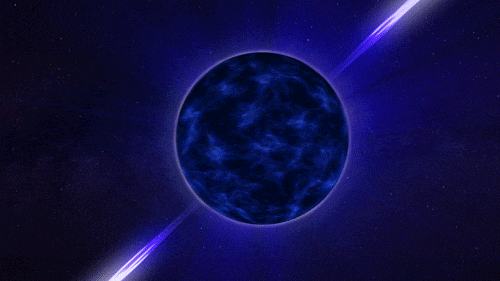Understanding Neutron Stars: The Cosmic Heavyweights

Neutron stars are among the most fascinating and enigmatic objects in the universe. Formed from the remnants of massive stars, these incredibly dense celestial bodies challenge our understanding of physics and astrophysics. In this blog post, we will explore what neutron stars are, how they form, their unique properties, and their significance in the cosmos.
What Is a Neutron Star?
A neutron star is the collapsed core of a massive star that has undergone a supernova explosion. When a star with a mass between about 8 and 25 times that of the Sun exhausts its nuclear fuel, it can no longer support itself against gravity. The outer layers explode outward in a supernova, while the core collapses under immense gravitational pressure. If the core’s mass is between roughly 1.4 and 3 solar masses, it compresses into a neutron star.
These stars are incredibly dense: despite having a mass greater than that of our Sun, a typical neutron star has a radius of only about 10 to 12 kilometers (6 to 7 miles). To put this into perspective, a sugar-cube-sized amount of neutron star material would weigh around a billion tons on Earth!
Formation of Neutron Stars
The formation of a neutron star begins during the death throes of a massive star. As nuclear fusion ceases, the core collapses rapidly under gravity. Protons and electrons in the core combine to form neutrons through a process called neutronization:
p + e⁻ → n + νₑ
This reaction produces a dense ball of neutrons, which resists further collapse due to neutron degeneracy pressure—a quantum mechanical effect arising from the Pauli exclusion principle.
If the mass of the core exceeds the Tolman–Oppenheimer–Volkoff limit (about 2-3 solar masses), neutron degeneracy pressure cannot support it, and the core will continue collapsing into a black hole.
Properties of Neutron Stars
Density and Gravity
Neutron stars have densities on the order of 10^17 to 10^18 kg/m³, similar to that of an atomic nucleus. This extreme density results in surface gravity billions of times stronger than Earth’s.
Magnetic Fields
Neutron stars possess incredibly strong magnetic fields, typically trillions of times stronger than Earth’s magnetic field. Some neutron stars, called magnetars, have magnetic fields even more intense—up to 10^15 gauss. These magnetic fields affect the star’s emission and can power high-energy phenomena like gamma-ray bursts.
Rotation
Newly formed neutron stars often spin rapidly, with rotation periods ranging from milliseconds to a few seconds. Over time, they lose energy and slow down. Pulsars are rotating neutron stars that emit beams of electromagnetic radiation from their magnetic poles. As the star spins, these beams sweep across space like lighthouse beams, creating regular pulses observed from Earth.
Types of Neutron Stars
- Pulsars: Highly magnetized, rotating neutron stars emitting beams of radiation detectable by radio telescopes.
- Magnetars: Neutron stars with ultra-strong magnetic fields causing dramatic bursts of X-rays and gamma rays.
- Binary Neutron Stars: Systems where two neutron stars orbit each other, sometimes merging and producing gravitational waves and heavy elements.
Why Are Neutron Stars Important?
Neutron stars serve as natural laboratories for studying matter under extreme conditions impossible to replicate on Earth. They help scientists understand nuclear physics, quantum mechanics, and general relativity. Observations of neutron star mergers have provided insights into the origin of heavy elements like gold and platinum.
Moreover, neutron stars are vital in testing theories of gravity. The detection of gravitational waves from neutron star collisions by observatories like LIGO and Virgo opened a new era of multi-messenger astronomy, combining gravitational and electromagnetic signals to probe the universe.
Conclusion
Neutron stars are extraordinary cosmic objects that embody the extremes of physics. From their birth in supernovae to their role in the creation of heavy elements and their use as probes of fundamental physics, neutron stars continue to captivate astronomers and physicists alike. As our technology and observational capabilities improve, we can look forward to uncovering even more secrets held by these dense stellar remnants.
Latest Blog Posts
Stay informed and inspired with our latest blog posts. Discover insights, tips, and trends across various topics.
-
The Jewel of the Solar System
Saturn and Its Rings: A Majestic Wonder of the Solar System Saturn, the sixth planet…
-
Beyond the Event Horizon
Understanding Black Holes: The Mysterious Giants of the Universe Black holes are among the most…

Leave a Reply